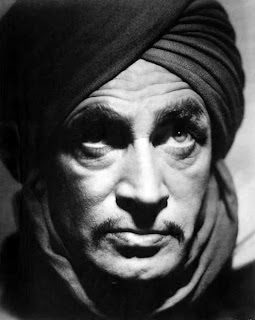Starring: Peter Cushing, Roberta Tovey, Jennie Linden
Dr. Who and the Daleks (1965), the first Doctor Who film and the first color appearance of the Doctor, has been released on Blu-ray by Studio Canal to celebrate the 50 year anniversary of the beloved sci-fi adventure show, which first aired on the BBC in 1963. This is also the hundred year anniversary of famed actor Peter Cushing’s birth, who stars here as the first non-canon Doctor. What does non-canon mean? Since the show first began with William Hartnell starring as the intelligent, if somewhat abrasive humanoid alien known as the Doctor, to date there have been eleven different actors appearing as the Doctor due to his ability to regenerate.
Peter Cushing is not considered part of that pantheon because his character, known as Doctor Who, bears some things in common with the Doctor of the television show, such as his love of science, travel, and adventure, but Cushing’s Doctor is a human, not an alien, whose surname happens to be Who. Dr. Who and the Daleks is not an official Doctor Who film. Rather it was an attempt by British studio Amicus continue competing with Hammer Studios. The two studios often ran neck to neck with horror films and adventure movies, and this was Amicus’s attempt to compete with Hammer’s more family-friendly pirate and dinosaur-themed adventure films. Other than an intelligent, science-oriented character named Doctor Who, the villainous Daleks, and the Doctor’s T.AR.D.I.S. time machine, Dr. Who and the Daleks bears almost no relationship to the show.
Co-written by Amicus founder Milton Subotsky and Doctor Who scribe and Dalek creator Terry Nation, Dr. Who and the Daleks was an attempt to cash in on Dalekmania, the Dalek fever that swept Britain during the early ‘60s. A scientist named Doctor Who (Cushing) invents a police box-shaped time machine known as the T.A.R.D.I.S. He shows the machine to his two granddaughters, Susan (Roberta Tovey) and Barbara (Jennie Linden), and to Barbara’s clumsy boyfriend Ian (Roy Castle). Ian trips and accidentally activates the machine, sending them light years away to a strange, hostile planet occupied by Daleks, militant robots determined to take over the world. The Daleks have also enslaved a peaceful, humanoid race, the Thals. Doctor Who and his family work with the Thals to free themselves from the diabolical snare of the Daleks and from potential radiation poisoning.
Though a loose, almost lazy attempt is made, none of the other characters from the show are reprised and die-hard Doctor Who fans are likely to be very disappointed by the changes. Cushing is wonderful in anything and everything, as far as I’m concerned, but compared to William Hartnell, he lacks the menace, power, and drive that made the Doctor a formidable opponent. Cushing certainly played roles like this in his career, such as Van Helsing, so I take this more as a fault of the writing than the performer. Cushing’s Doctor Who is a spacey older gentleman who bumbles his way into adventure and barely bumbles back out with the help of his family, making it seem like this film was meant for a somewhat different (and younger) crowd than Doctor Who.
Certain audiences will find plenty to love here, though, as the film is fun, colorful, over the top, and packed with amazing scenery. Amicus certainly spared no expense on the set, which was shot in Technicolor and looks simply incredible. From the Dalek city to the petrified jungle, the film seems to have had some influence on later sci-fi film sets, namely the almost psychedelic plastic-coated Dalek set. This is definitely a film for kids or adults who can easily slip into what I like to call “kid brain.” It’s definitely silly in parts and will probably appeal more to fans of Flash Gordon than Doctor Who.
Even though the Daleks are present, this film lacks any real sense of danger or suspense, and the Daleks are likely to disappoint hardcore fans. The slight redesigns look great, but the Daleks are absolutely not frightening. They only kill one person throughout the film and they never say “Exterminate!” Though other characters also banish any sense of urgency. Roy Castle is the awkward comic relief and the Doctor’s only competent companion is his young granddaughter, played charmingly by Roberta Tovey. Barrie Ingham provides some unintentional comedy as the Thal leader, but he is also delightful.
Released in a 1080p resolution and 2.35:1 aspect ratio, Doctor Who and the Daleks has been digitally remastered and presented in HD and on Blu-ray for the first time. Though the print still appears undeniably aged, the Technicolor looks wonderful and the otherworldly, fantasy elements of the set look fantastic here. The bold colors and imaginative set pieces are one of the strongest reasons to see this film and they look better here than they probably ever have.
There are a number of nice extras created just for this release. There’s a very entertaining and informative audio commentary track with female stars Roberta Tovey and Jenny Linden. A very enjoyable documentary about the Daleks, Dalekmania, is included, as is a feature about the restoration work done on Doctor Who and the Daleks. There are also a few new, albeit short interviews, though none of these can compare to the commentary track with Tovey and Linden.
Avoid Doctor Who and the Daleks if you’re a die-hard Doctor fan or if you’re looking for an introduction to the series. On the other hand, if you’re a fan of British adventure films and love Peter Cushing, it comes recommended for the sheer fun factor. Dr. Who and the Daleks was followed by a less successful sequel, Daleks — Invasion Earth: 2150 A.D., which also starred Cushing and was released on Blu-ray at the same time by Studio Canal. Be forewarned that these are both region B Blu-ray releases and U.S. fans can only watch them with a region B or multi-region Blu-ray player.























